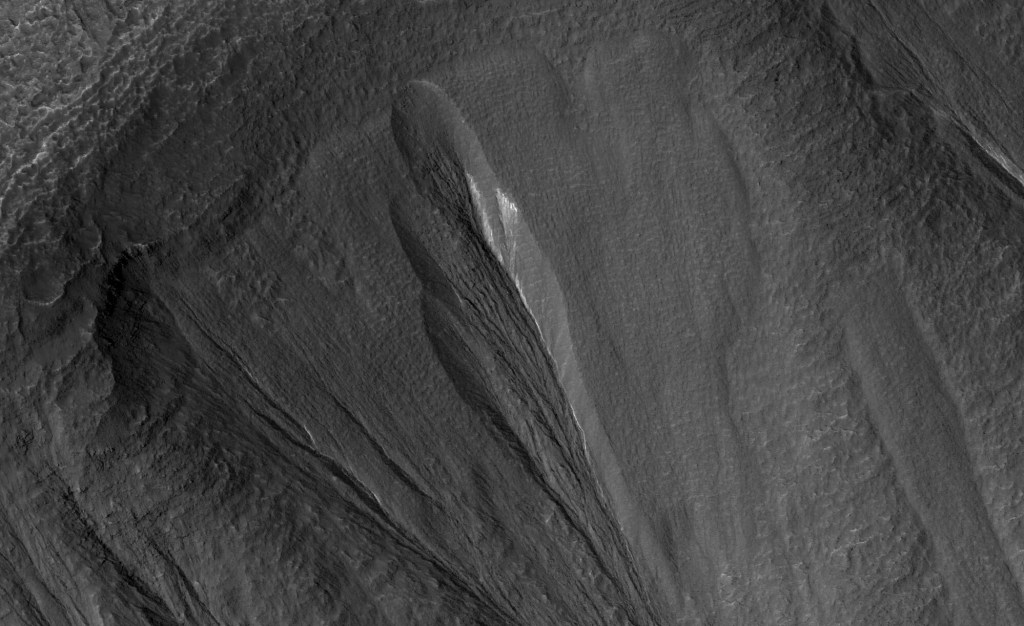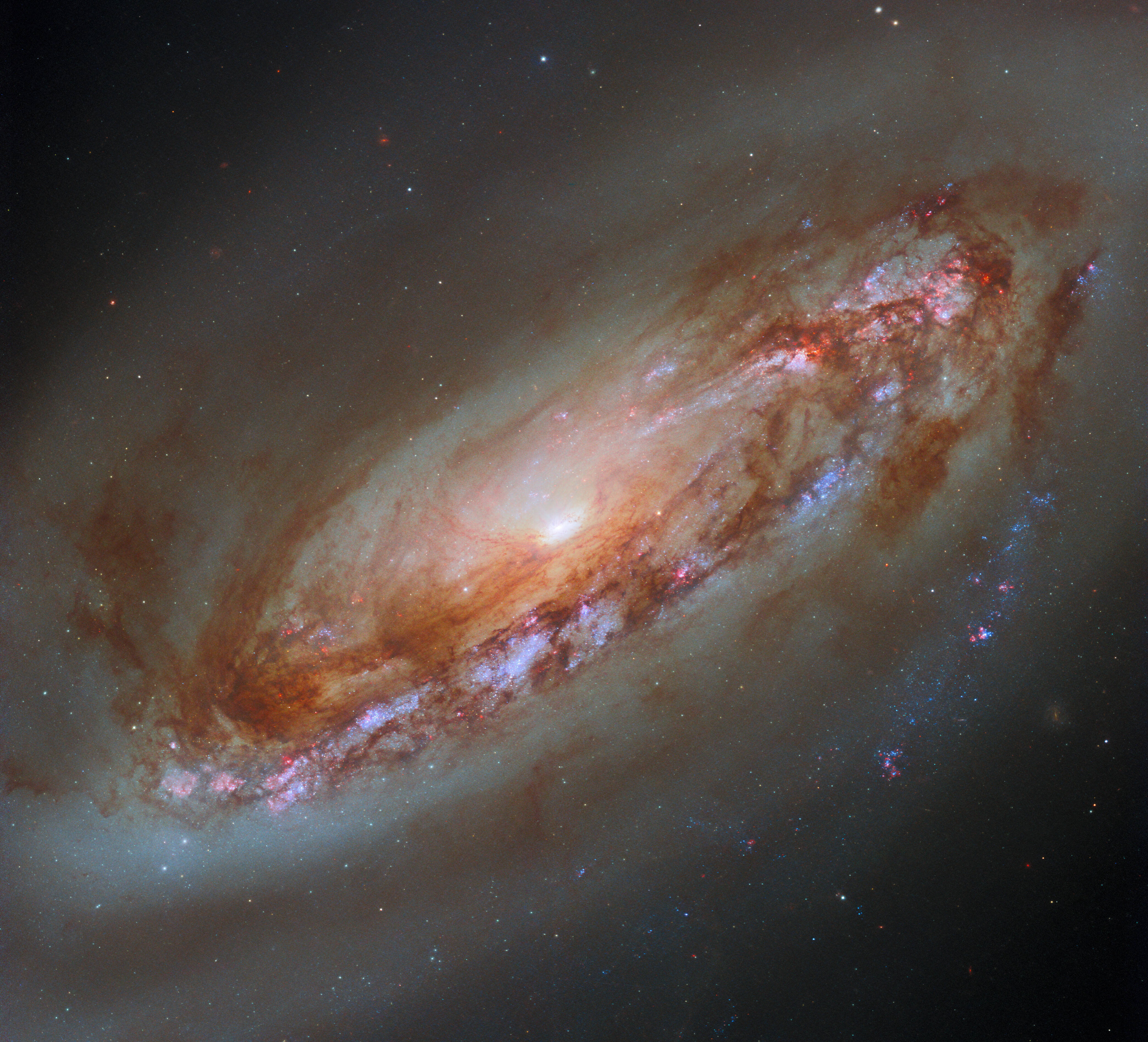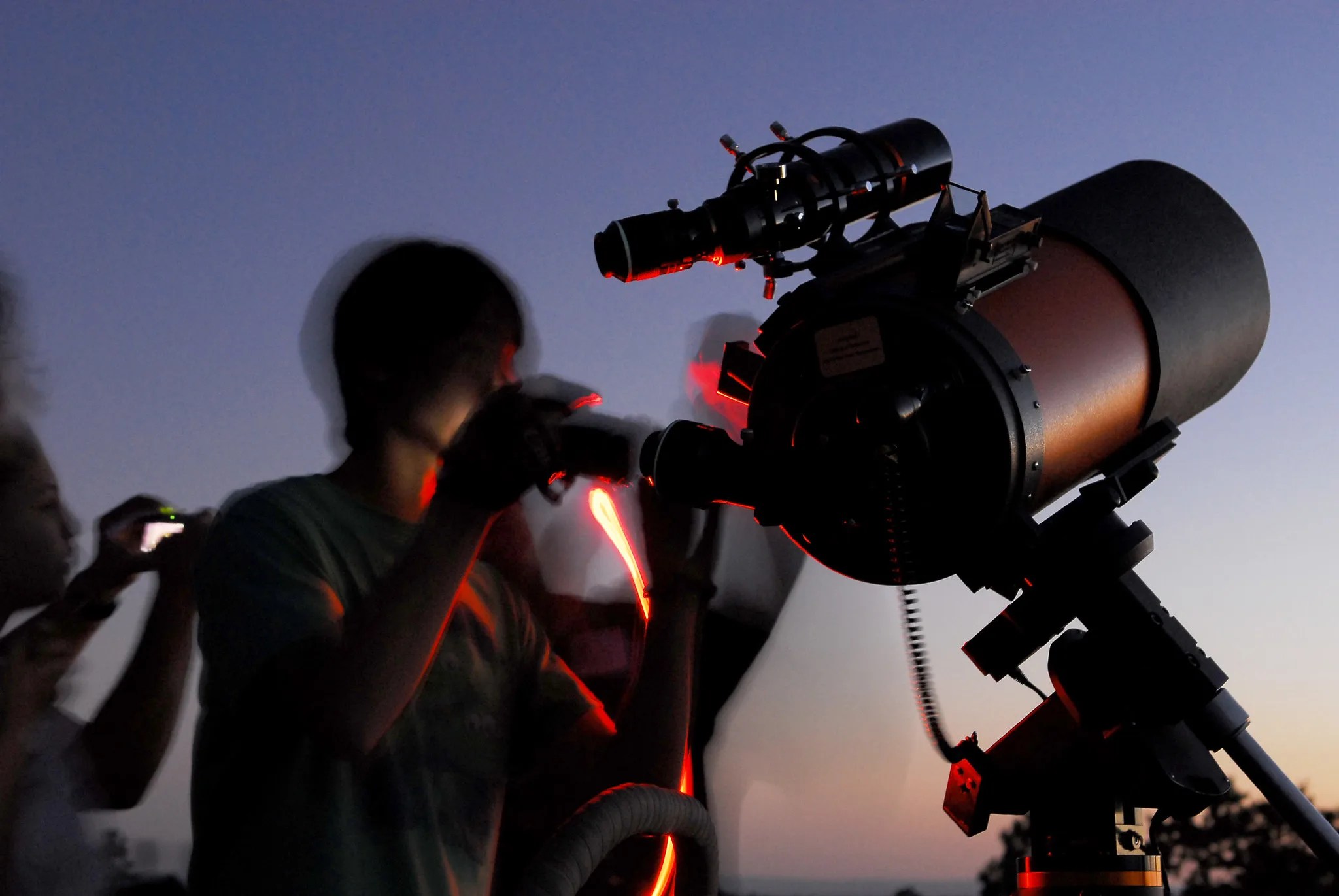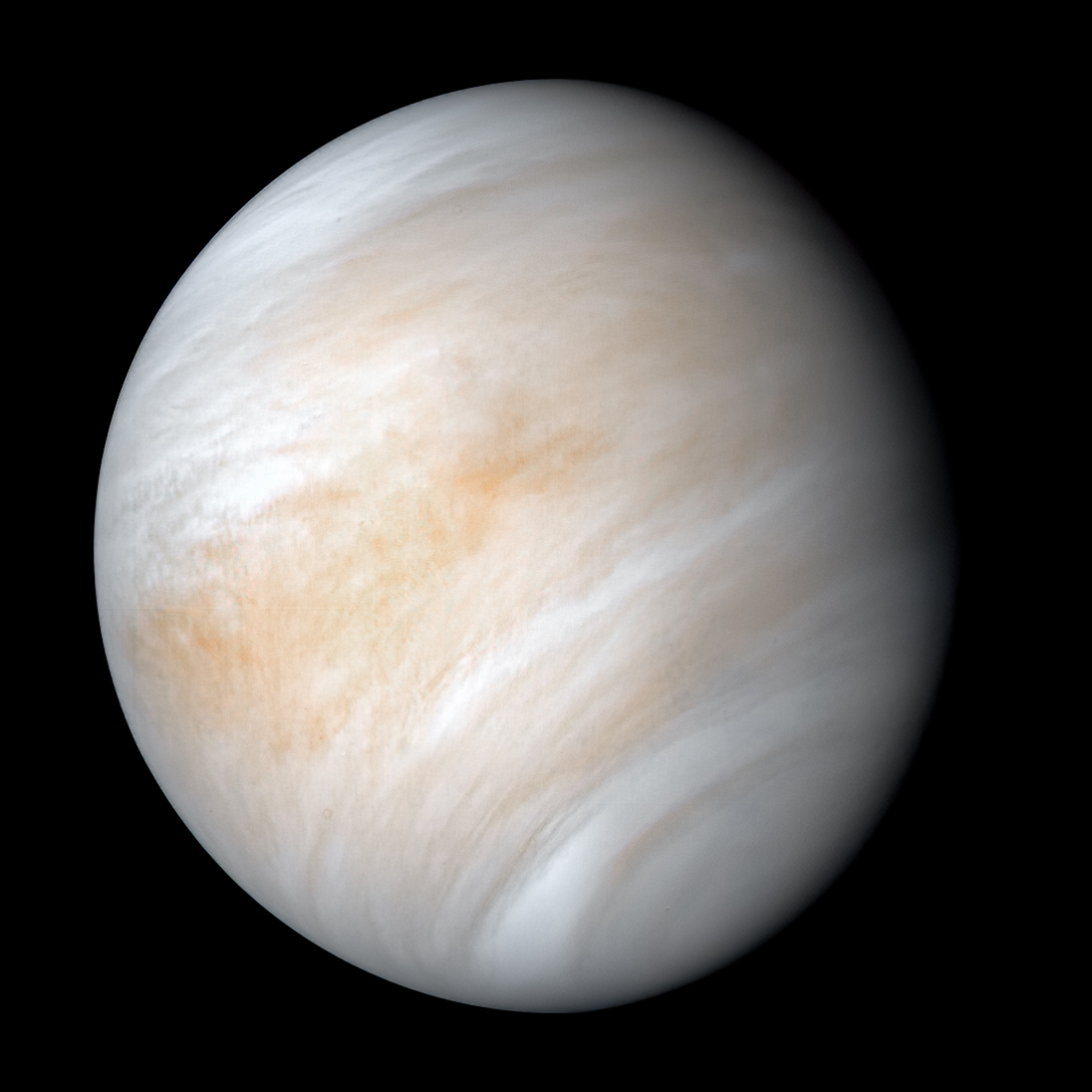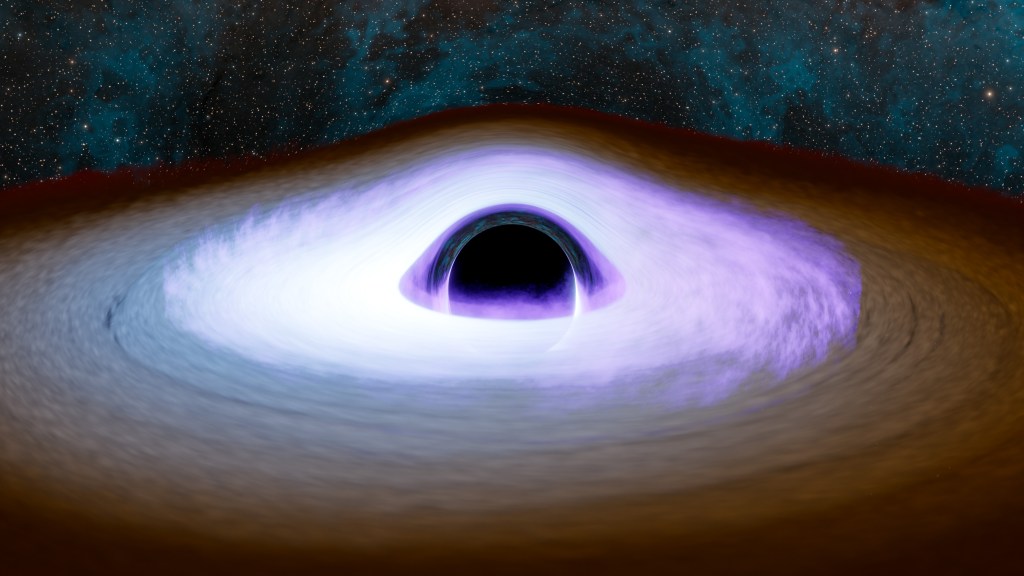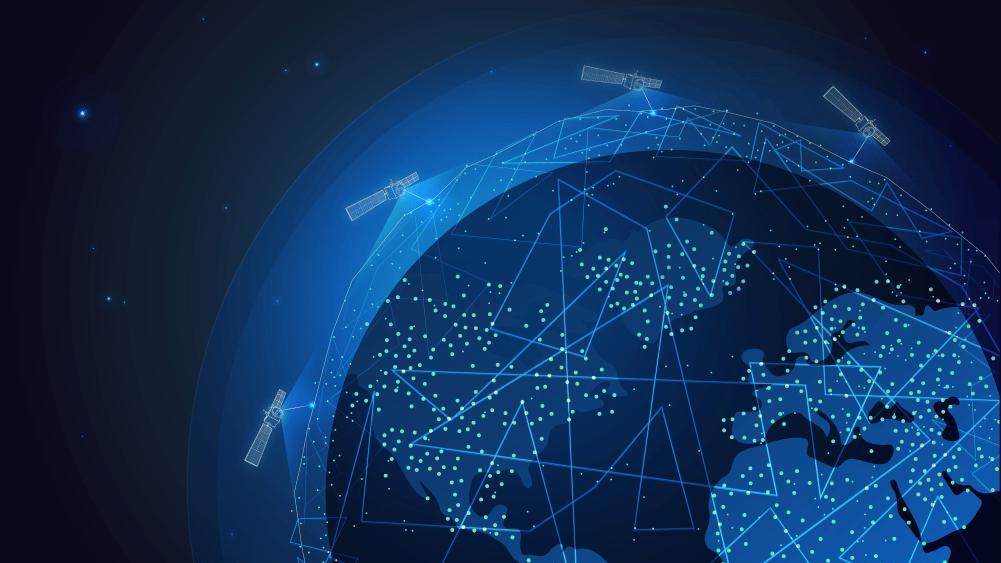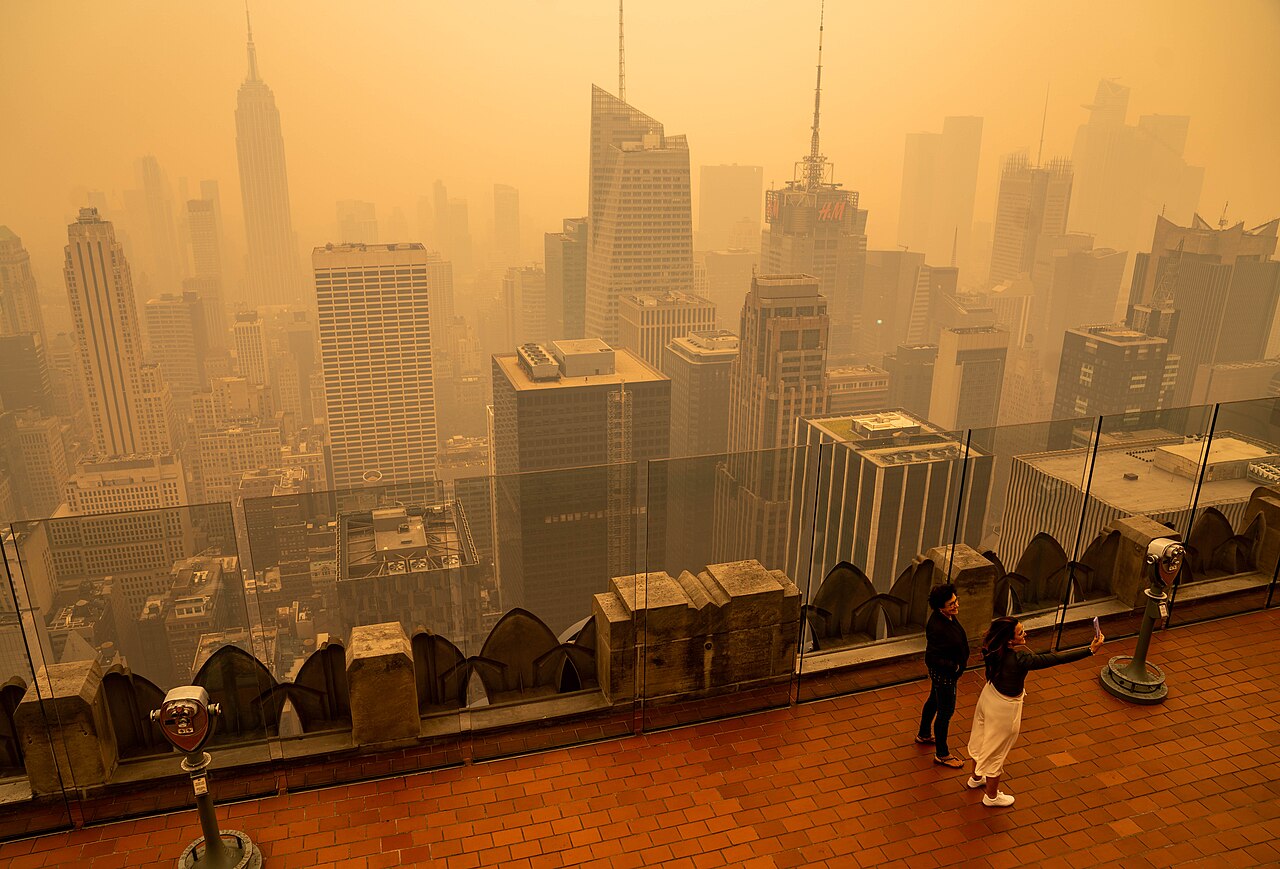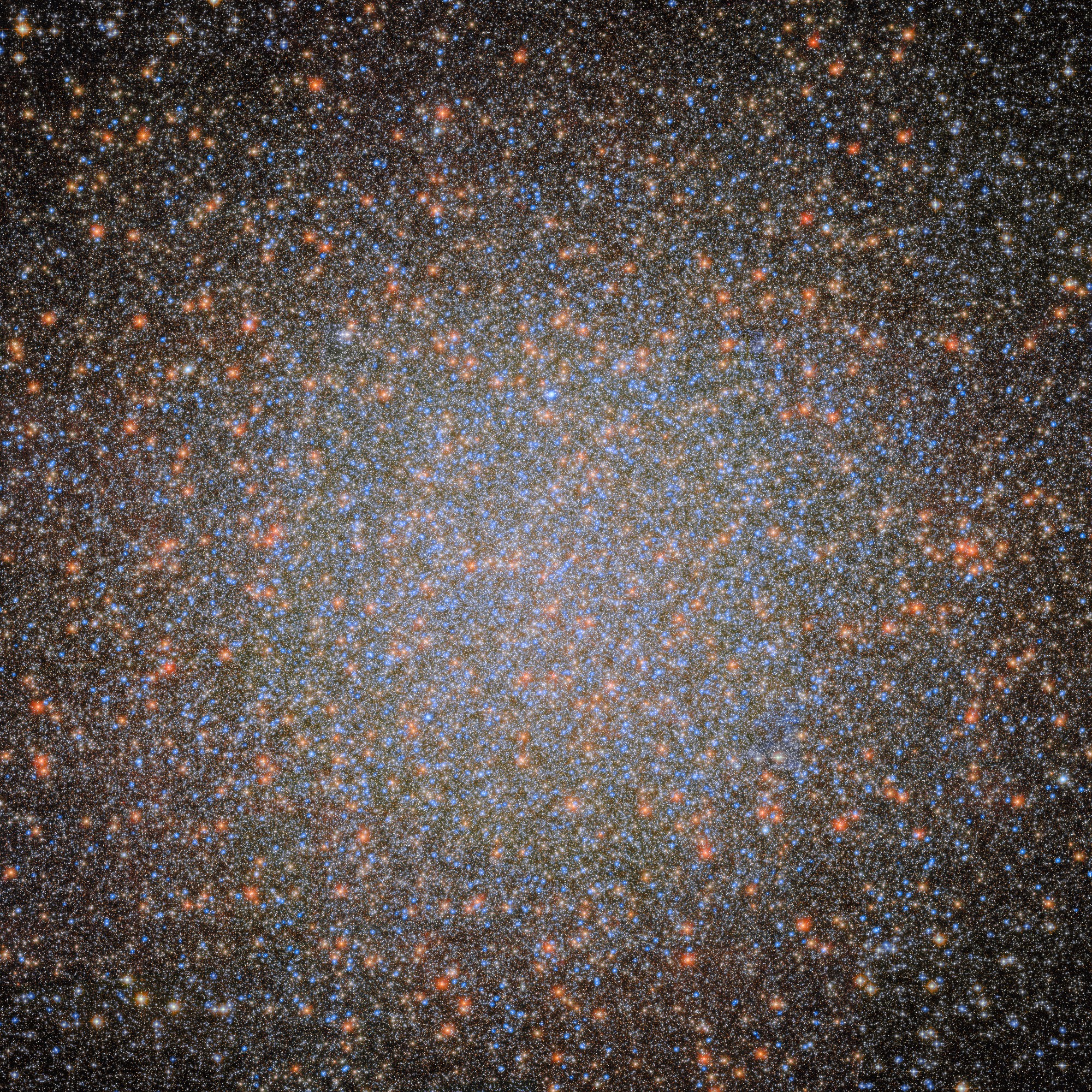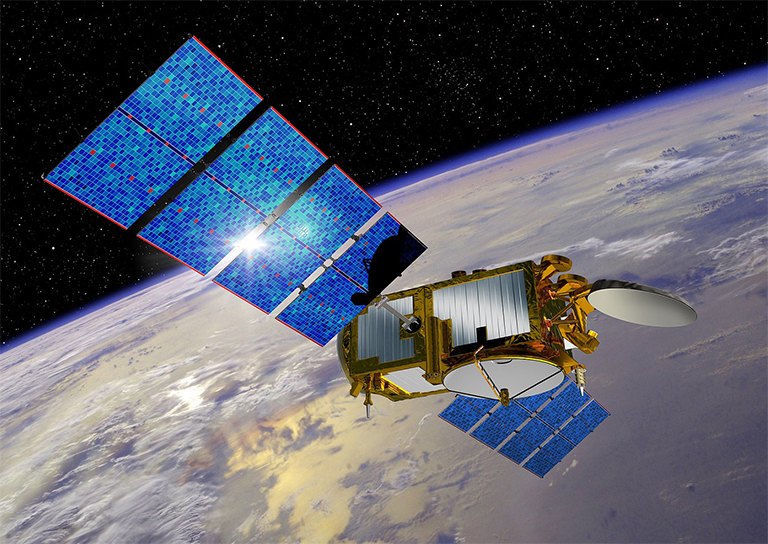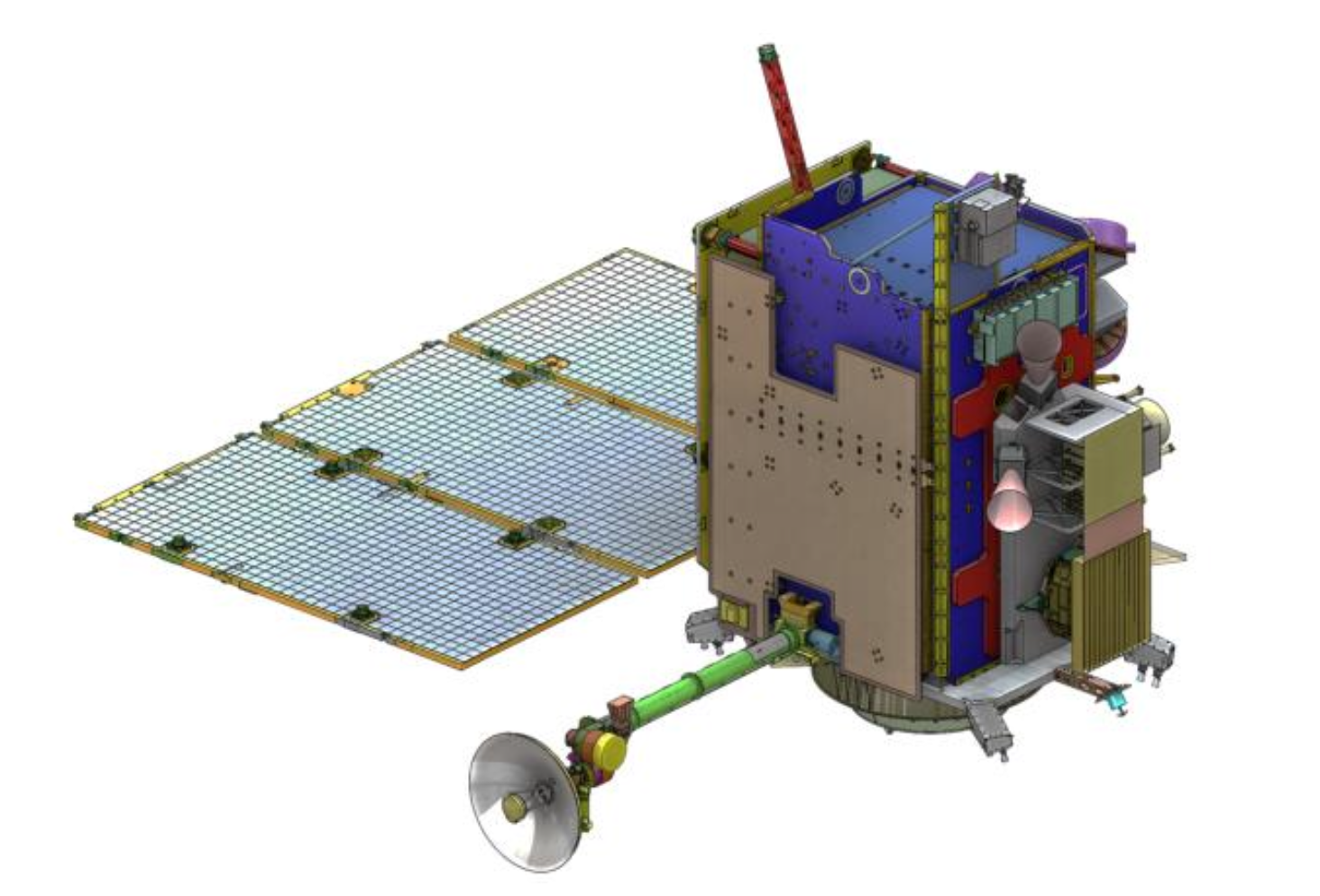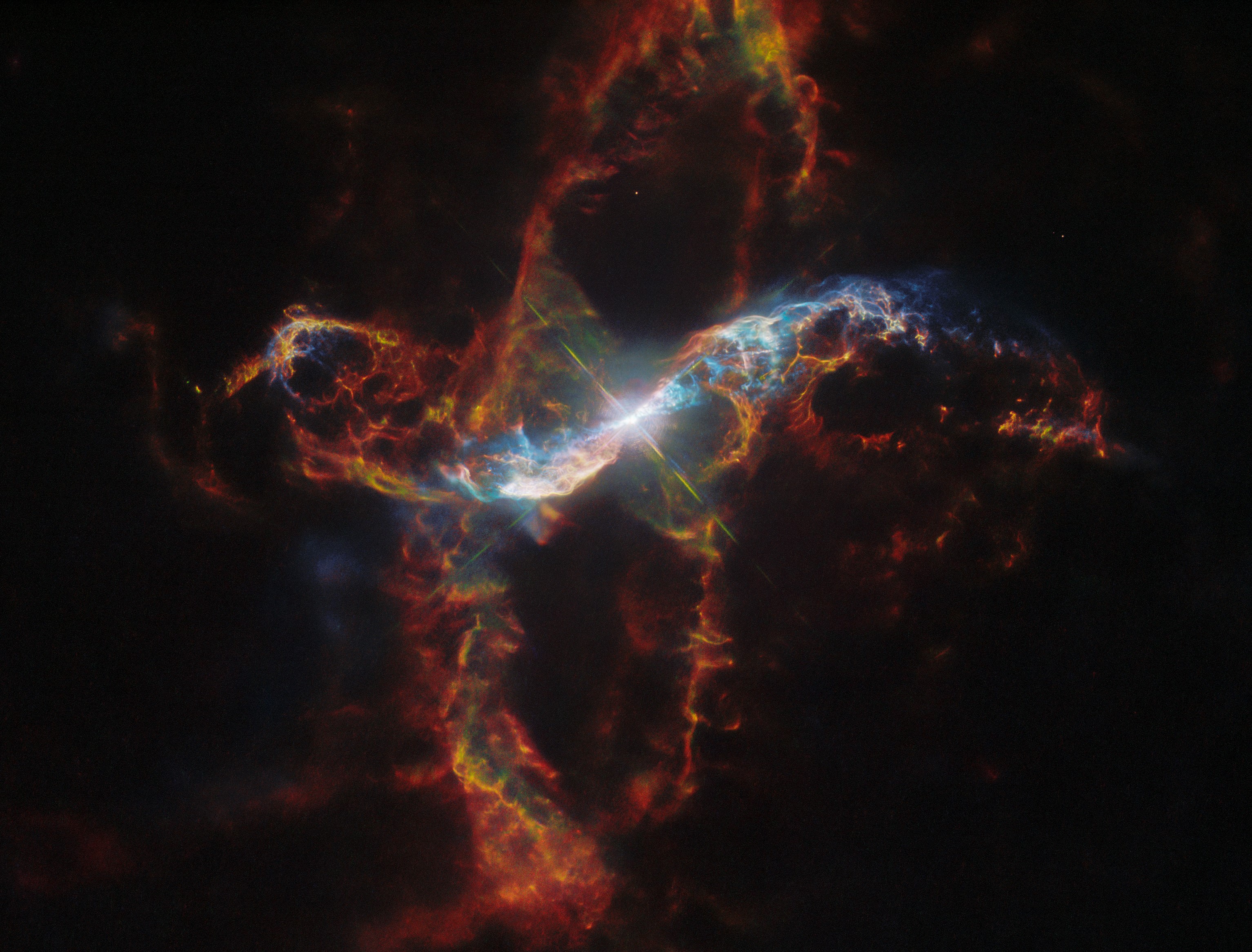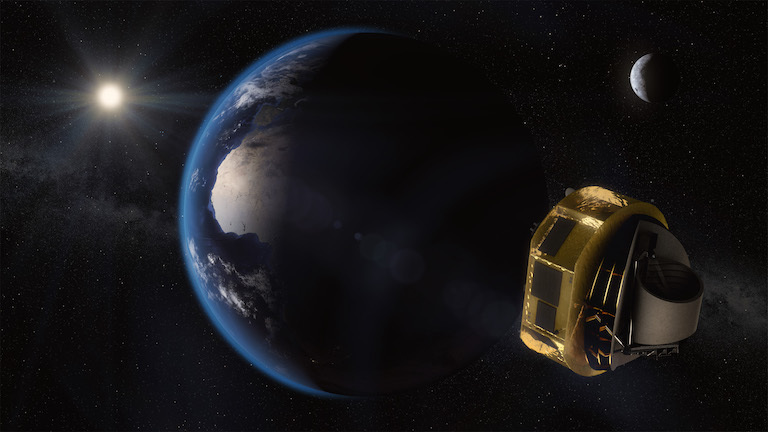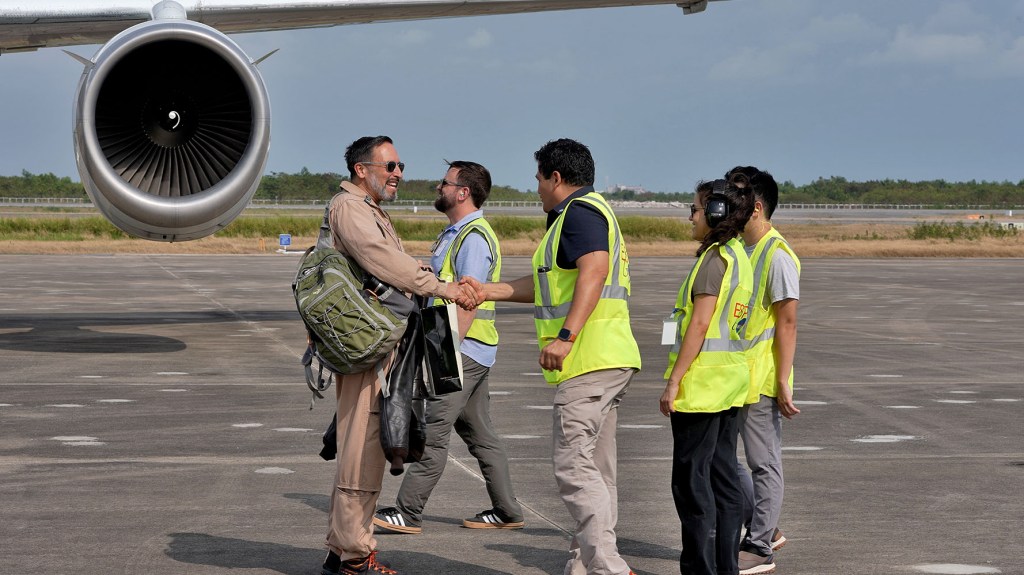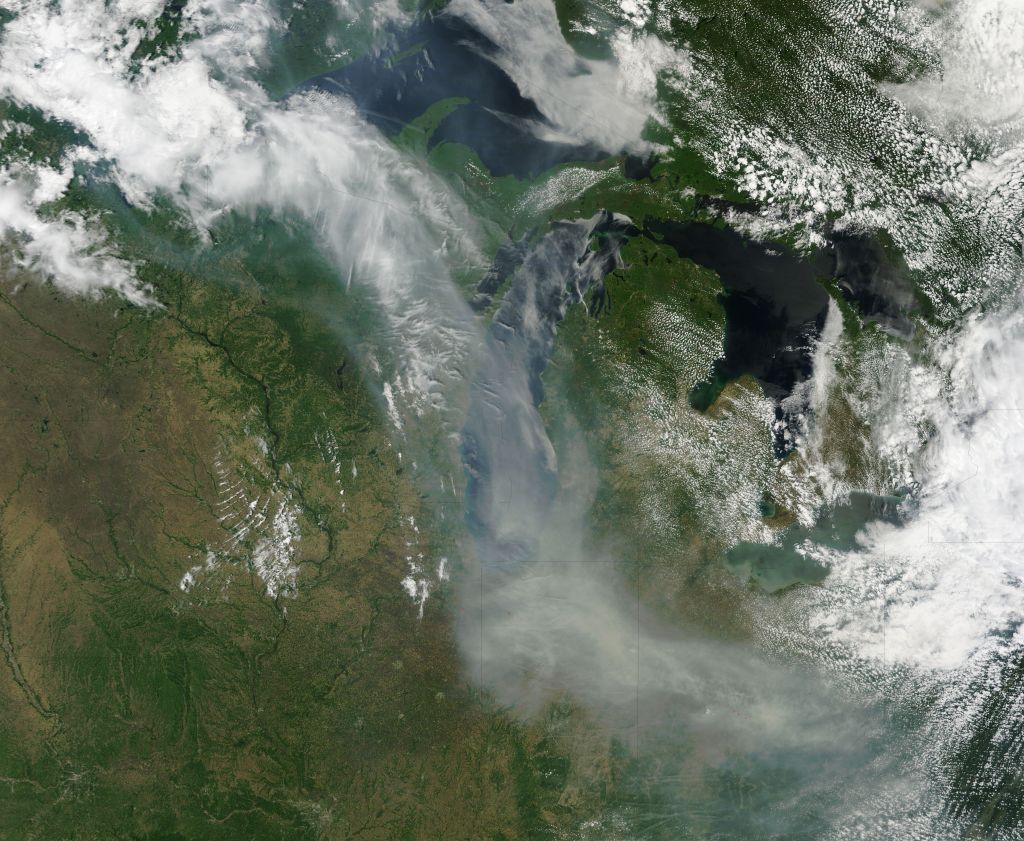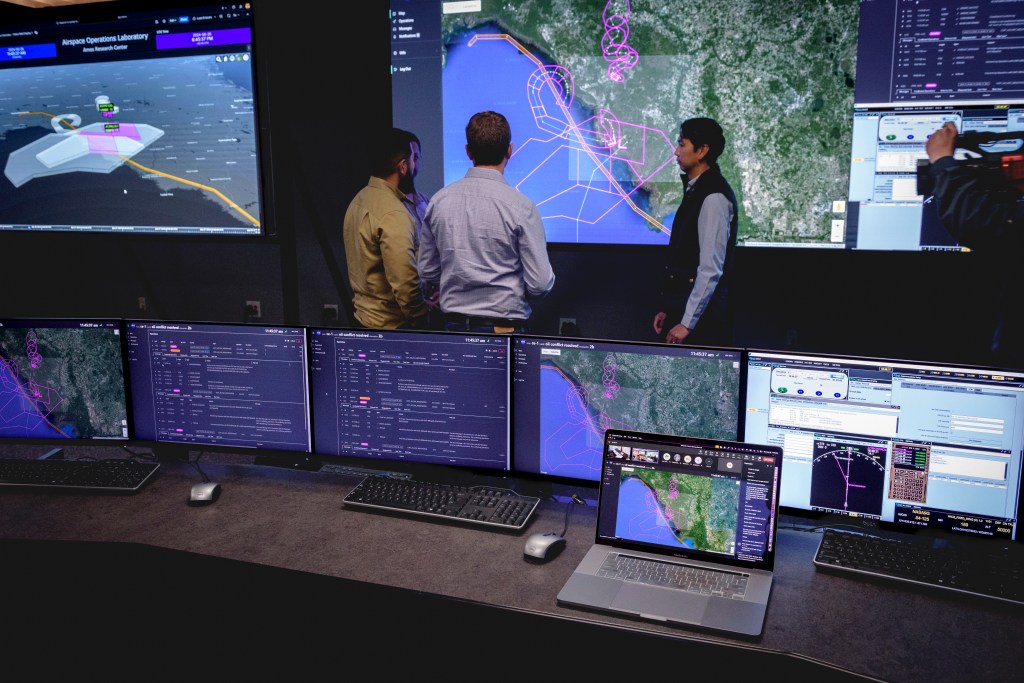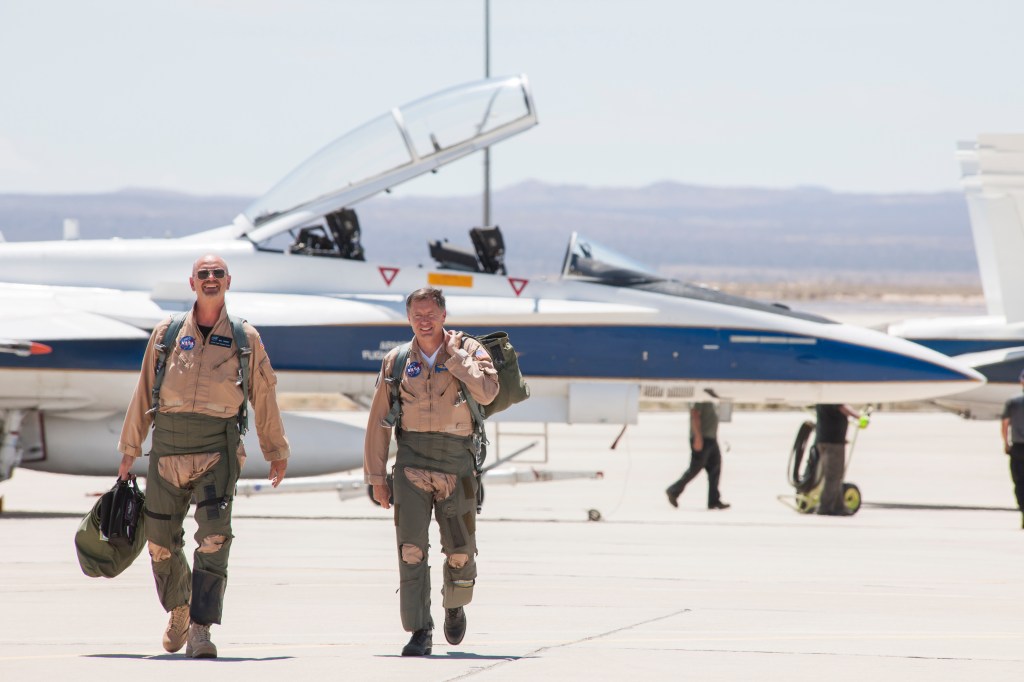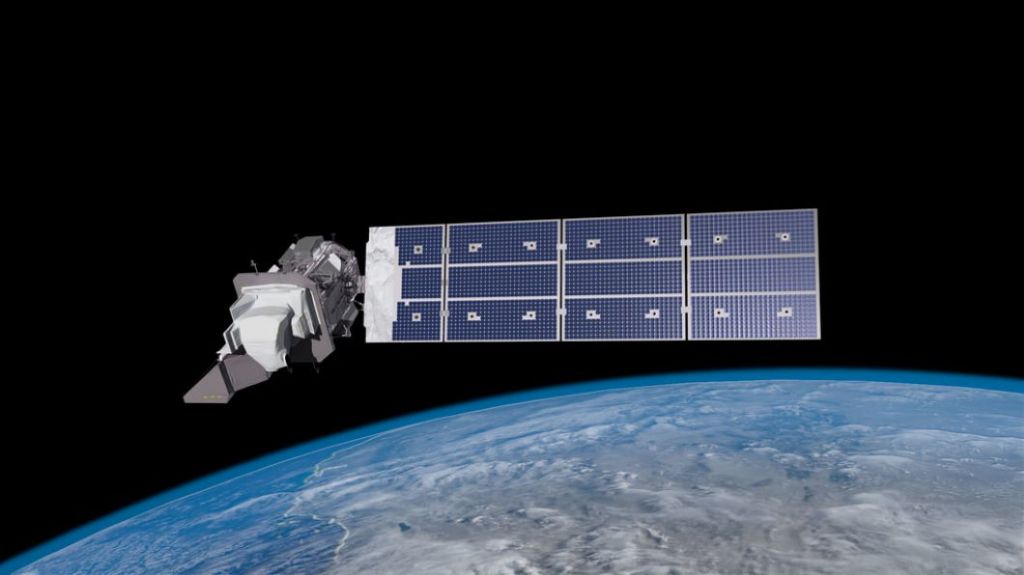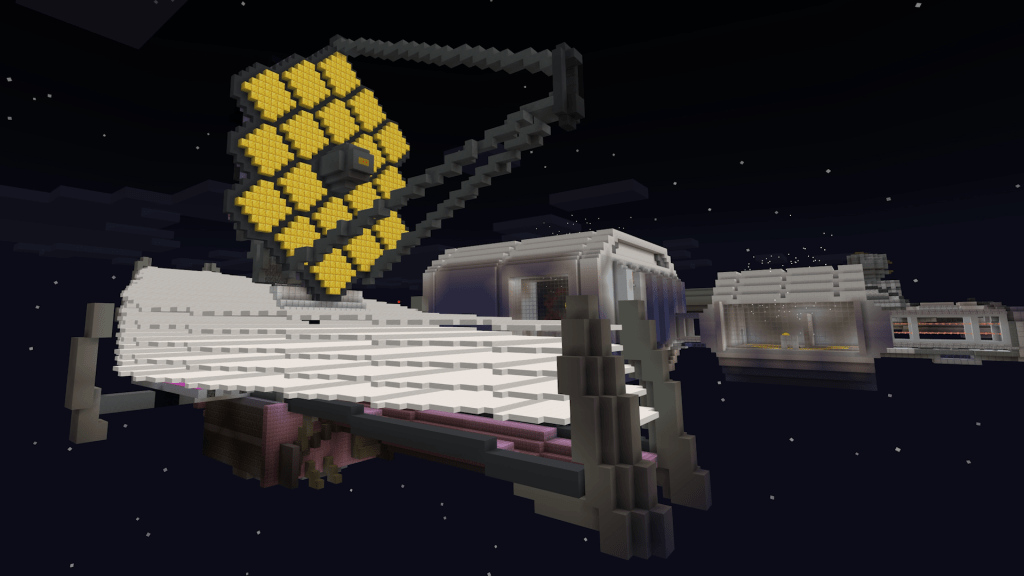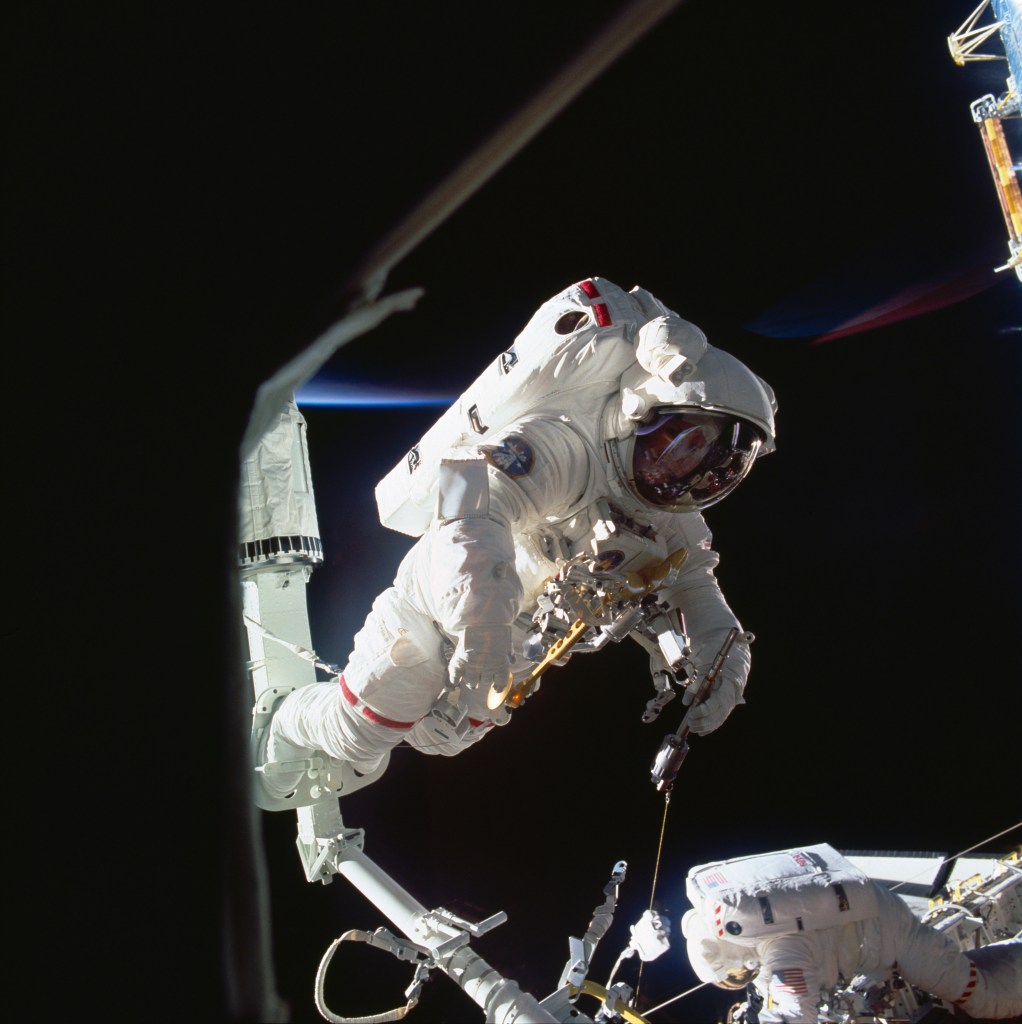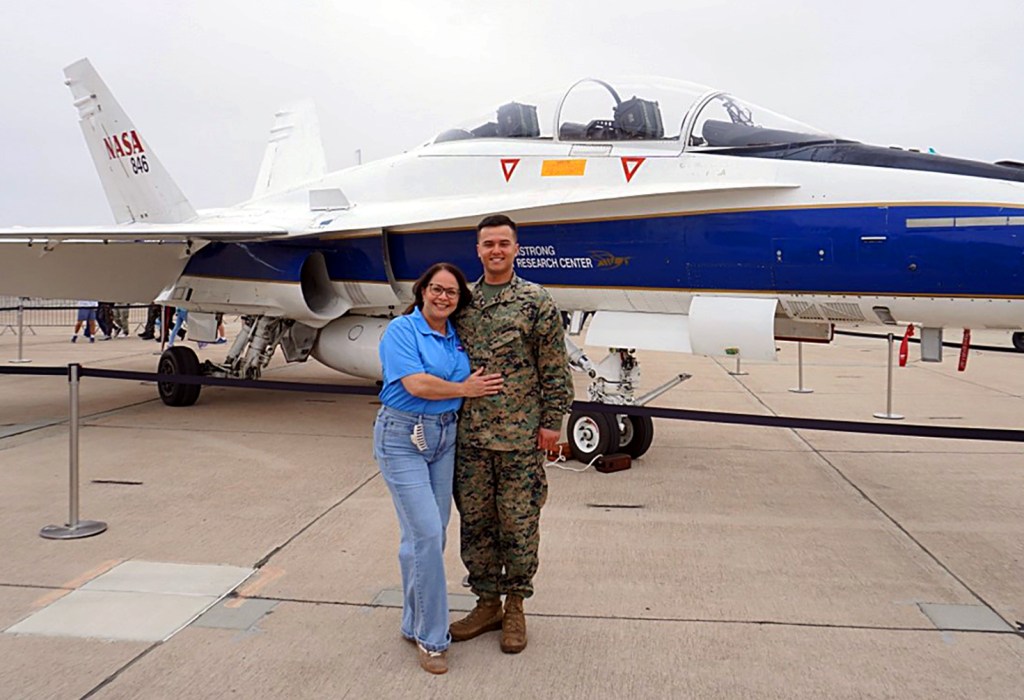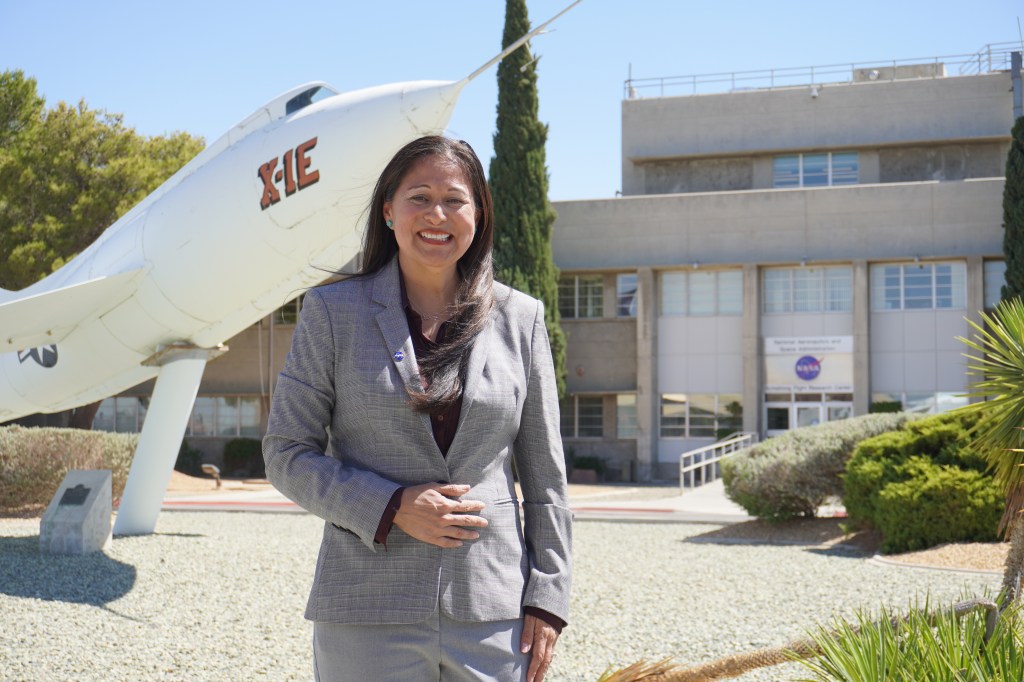
From Earth orbit to the Moon and Mars, explore the world of human spaceflight with NASA each week on the official podcast of the Johnson Space Center in Houston, Texas. Listen to in-depth conversations with the astronauts, scientists and engineers who make it possible.
On episode 358, the Deputy Chief Scientist for the International Space Station dives into the different ways the orbiting laboratory provides benefits to humanity. This episode was recorded on Sept. 26, 2024.

Transcript
Host (Kenna Pell): Houston, we have a podcast! Welcome to the official podcast of the NASA Johnson Space Center, Episode 358, “Our Orbiting Lab’s Benefits for Humanity.” I’m Kenna Pell and I’ll be your host today. On this podcast, we bring in the experts, scientists, engineers, and astronauts, all to let you know what’s going on in the world of human spaceflight and more. On this episode, we discuss space station science, but more specifically, how space station science benefits you.
I sit down with the Deputy Chief Scientist for the International Space Station, Meg Everett, to dive into the vast world of the orbiting lab’s benefits to humanity. We talk through an array of these benefits from how station research has improved cancer drug administration to everyday household products you might find at home. With so many benefits and so little time to cover, we break down our conversation of examples into four categories: scientific, societal, exploration, and economic. Through our discussion, we highlight new scientific breakthroughs taking place on station that help us on Earth, groundbreaking discoveries helping society, technologies that serve as a test bed for future space exploration and contributions to both the economy here on Earth and the growing economy in low Earth orbit. Let’s get to it.
[Music]
Host: Meg, thanks so much for joining us on Houston We Have a Podcast today. We are so lucky for opportunities to talk to folks like yourself who have some of the most unique jobs, and not many people can say they’ve been the Deputy Chief Scientist for the International Space Station. I’m sure our listeners would love to hear your path to this position. So let’s start from the beginning. Where are you from?
Meghan Everett: Alright. Well first, before I get there, I just want to say thank you for having me on the podcast. We always love any opportunity to talk and share about the great science that we do on the space station. And so originally, I grew up in a small town in upstate New York called Ballston Spa, and I lived there all through my first four years of undergrad. I went to college at Skidmore College in Saratoga Springs.
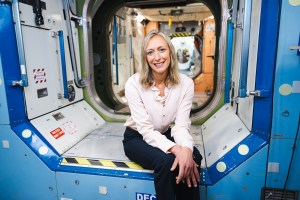
Host: Cool. I meet so many people from upstate New York. And growing up there, did you know you wanted to be a scientist at that time?
Meghan Everett: No. So I was always really interested in science and math, but I didn’t really at that point in time think it was an actual career. So I did well in school. And then when I got into college, I really got into human physiology and took some great classes in that then led to my grad school degree.
Host: And so you didn’t really know what kind of opportunities there were for something like that, or actually being a scientist when you grow up was a thing. So there probably weren’t a lot of STEM opportunities available then.
Meghan Everett: Yeah, unfortunately there were not. I had a great mentor at Skidmore College that really opened the door to doing science and research. But I didn’t really know of all the opportunities, particularly opportunities at NASA, that were out there. So when I was in college, I did short track speed skating and I just wanted to take a lot of classes that made me faster on the ice. And eventually, that led to a degree in exercise physiology and a passion to do research.
Host: Very nice. And by the way, when I say back then, that wasn’t that long ago. So what about any interests when you were a kid working at NASA when you grew up?
Meghan Everett: So, honestly, in upstate New York, I did not know very much about NASA. And when I got a position as a graduate student research intern at University of Houston, actually not at all related to NASA. And then my advisor at the time received a NASA research grant and I got the opportunity to work at the space center and do research on mouse models of muscle and bone.
Host: Which space center was that?
Meghan Everett: That was here. That was here in Houston’s, yes, here at Johnson Space Center.
Host: So your path to NASA, you started here at JSC, you talk about human physiology and can you tell us a little bit about your path to Deputy Chief Scientist of space station? Cause there were some positions before where human physiology played a big role in, right?
Meghan Everett: Sure. Yeah. So as I said, my background is in human physiology. I went to University of Houston where I got my master’s and my PhD in human physiology. I took a lot of biochemistry, chemistry-related classes as part of that degree. And when I finished my master’s degree, I actually got a job at in the human physiology lab here at Johnson Space Center. And while I was working there, I also finished my PhD. So I got to kind of do both at once and really apply the things that I was learning in school to the NASA spaceflight environment. So I worked in the exercise physiology lab at NASA for most of my career actually. And I served in various positions there doing human physiology, EVA physiology. And so that’s kind of all of the physiology related to things that the astronauts do on spacewalks and getting ready to do that work. And as I progressed through that laboratory, I was a researcher and I managed some of the projects and groups in that laboratory. And then I had the opportunity to move over to the ISS program. And when I first started in the ISS program, I did crew health systems integration for the vehicle office. And I worked there for about a year. And then I had the opportunity to take the position as the Deputy Chief Scientist in the ISS Program Research Office.
Host: And now I skipped something. I got excited listening to your path to NASA and totally skipped. So I want to know, you had that, was it an undergrad internship here and then you ended up in Houston and went to UH from upstate New York? Or how did that go? Did you realize when you got here to NASA that you wanted to stay?
Meghan Everett: Yeah, so actually when I moved from New York to University of Houston, it had nothing to do with NASA. It was actually a research internship in genetics related to one of the medical institutes here. And I did that. And then, as I was here, my advisor also got this grant to do research at the space station in animal models. And then when I was kind of immersed in this environment, I realized like how cool this is. And that’s where I really got my first exposure to NASA and seeing all of the amazing opportunities and laboratories. And I think this was really the first time that I got to experience scientists and engineers and project managers and flight directors all working together to get this mission of keeping humans healthy and safe in space. So it was very cool. And I kind of got like sucked in and I’m still here.
Host: I love that. So from upstate New York, didn’t really know much about NASA and then got down to Houston and saw all the things we do here in different realms of science and stuff. And tell us a little thing before we get into the science. What do you like to do outside of work?
Meghan Everett: So I am a huge outdoor enthusiast. I love doing anything exploring related, running, biking, hiking. I love traveling. In the summer, I’m a huge water sport fan, so anytime I can do water skiing or wake boarding or paddle boarding, I’m definitely out there doing that, which is great cause it’s summer, nearly year-round here in Houston. So yeah, you’ll usually find me outside.
Host: Look at you recruiting more scientists from upstate New York. It’s summer year-round here, right? So let’s move into some of the research on ISS. The International Space Station’s been operating for more than 25 years, and we’re currently in the 23rd, almost 24th, year of continuous human presence on board the orbiting lab. And of course, while they’re there on the orbiting lab, astronauts, their main focus is science and research. So Meg, can you give us some of the basics about the types of research we do on the International Space Station?

Meghan Everett: Sure. So before I get into the types of research, I just want to take a minute to kind of set the stage for how miraculous the ISS is as an orbiting laboratory. And so if you think about it, most laboratories, there’s kind of like one room or one building where they’re dedicated to a certain research area and they have scientists working in this area that are all dedicated to their research projects. And when we talk about the ISS as an orbiting laboratory, so it was actually designated as a U.S. National Laboratory in 2005 by Congress and we host a variety of interests such as human research, biology, fundamental and physical sciences, exploration tech demos, STEM or education related research, and even in-space manufacturing. And so what’s even more kind of amazing about this is that we don’t have these researchers on the space station doing their research. We have to train the astronauts to do the research for these scientists. And the scientists are on the ground helping guide the research so that they can get their objectives accomplished. So it really is a huge system and community working together to achieve these goals.
So in addition to that, we have a lot of users of the ISS program. So when we talk about it being an actual U.S. National Laboratory, we’ve got NASA programs that conduct many of the different areas I just talked about, like human research, biological and physical sciences. We have the ISS National Laboratory and they really focus on a lot of academia and commercial research. So anything that is outside of NASA research. And we support research from companies, both small and large government agencies. We have international partners. So this is always an amazing thing about the International Space Station, is that it really is one of the few places where we can see peaceful international collaboration among all of our partners that include the United States, Russia, Europe, Japan, and Canada. And then more recently, we have private astronaut missions. And these were kicked off to really kind of enable and help a commercial market thrive in low Earth orbit. So we really tried to open up commercial opportunities for these private astronaut missions.
Host: What a really cool way to explain how, you know, from a scientist perspective, how usually when you have a lab, it might be one focus area in science. And so to break that all down, and we do all of that on the International Space Station, what 250, 260 miles above is pretty amazing. It’s an amazing place. And can you explain the era that we’re in right now with the International Space Station? So for example, at NASA, we can we communicate that this is the decade of results? Can you explain what that means?
Meghan Everett: Yes. And so yes, this is the decade of results and it’s really kind of our third decade of research. And so if we go back and we think about the first decade was what we called the decade of construction. So all laboratories need to be built, and this is where we built the national laboratory. And so unlike a laboratory on the ground where you can kind of ship things in and build it up really quickly, we actually have to fly hardware up to the International Space Station and we have to figure out how it’s going to work and what exactly we need. So it takes a while to get this established and get some of the things right, because things don’t work the way they work on the ground. Microgravity has its own little unique things that we have to figure out. And then the second decade was kind of where we moved from doing the initial construction type of research to a full-on utilization where we were like really using these things to generate a lot of meaningful, impactful research. And that brought us to the third decade that we’re in right now, that we call the decade of results. And this is where we are full up utilizing all of our facilities on the space station. And we’re really like developing this cutting edge of space capability where we’re not just doing research on the space station. We are doing innovative and technically excellent research on the space station.
Host: So part of the decade of results, we say that more breakthroughs are materializing than ever before. What’s that mean?
Meghan Everett: Yes. So it’s not just about doing the research and kind of like keeping it in our bubble or keeping it in our heads. We want to get this data out there so everybody knows that we’re doing it. So we have done more than 4,000 investigations on the space station that have included 5,000 investigators. So that’s 5,000 scientists represented on the International Space Station. This has resulted in more than 4,000 scientific publications and even the images that we take from the space station, things that are captured on Earth, we have over 4.6 million images that have been captured, which is just absolutely amazing. The other thing I want to note about these publications and these research results is they’re not just papers that someone writes. These are really going in top tier, peer reviewed academic journals. So, this national laboratory that we have in space is competing with huge science foundations and academic research institutions for the level and quality of research that’s coming out of the space station.
Host: So many investigations and top tier papers, which equals so many benefits, which we’ll get into. But you know, how busy is space station? What is the tempo of operations like, including science and research right now? Can you explain that, how busy it is?
Meghan Everett: Yes. And I love this question because we are super busy. We have cargo flights going up and down to the space station on a regular basis, and every single one of those cargo flights flies an incredible amount of science. So one of the missions this year flew almost 2,500 pounds of science up and down to the International Space Station. And just this last year alone, we flew 13,000 pounds of science and hardware to the space station. All of this going to support our investigations on the International Space Station.
Host: So how many research investigations or experiments are crew members working while they’re up there for six months at a time?
Meghan Everett: Yeah, so in any increment, we have over 200 investigations and any crew member alone will participate in over a hundred of these investigations. And this is really accumulated to over 700 hours of science just in five to six months of an increment. So the crew spend a ton of time doing this science and they really enjoy it, which is great to see that they’re participating and enjoying their efforts.

Host: And so from a scientist’s perspective, of course you really understand what the benefits of doing research in space or on the space station are. Can you explain first why doing research in low Earth orbit is beneficial? And then of course, why is this important or benefits everyday lives here on Earth?
Meghan Everett: Yes, and I love this question because this is one of the things that we really want to share in this podcast is that the science that we do in space isn’t just for science and space exploration, it’s for people here on Earth and it really does benefit humanity. So I’m hoping today that we can give you some examples of doing that and how we do that. Some of the just real quick examples, and we’ll go into all of these in more detail in this podcast, but they range from some medical advancements. We have a lot of science that flies outside the space station where we do imagery and we can get pictures and we can do remote sensing. And because the space station covers over 90% of the Earth’s surface, we can get images from all over the Earth and a lot of times better and more detail than we can get from ground-based sensors. We also do technology demonstrations that can help things such as medical devices or remote medical operations or even plant growth here on Earth and help some of those difficulties that we address. And then we also really can stimulate the commercial industry by developing jobs through space-based companies here on Earth.
Host: And so as we speak right now, I know the International Space Station is flying right over Hurricane Helene. And so we’re providing some commentary on that and meteorologists are tuned in to see a little bit of that from a different perspective. There are so many different benefits, so much to break down here. Can you go into some of the different areas? I know there’s four different areas of the benefits of humanity that we break it down into. Can you do that for us here? What are those four?
Meghan Everett: Yes. So those four areas are scientific benefits, exploration benefits, societal benefits, and economic benefits.
Host: Okay. So with scientific, exploration, societal, and economic, let’s go to our first one, which is benefits to science. Can you give a high-level explanation for that and then we’ll take a deeper dive with some examples?
Meghan Everett: Sure. I’ll go through that one. And before I start on that, I want to highlight that while we break these down into four different categories, they aren’t kind of siloed in each one of those, right? And so they overlap and they integrate with each other and sometimes it’s hard to figure out which one goes in which category, but really we want to talk about how science on the space station benefits Earth. But I’ll start off with the science benefits. And so a lot of the science that we do on Earth is actually limited by gravity. And so we can improve our scientific discoveries and advancements if we move these things to a microgravity environment. And some of the things that we have in space is absence of buoyancy and sedimentation. We have an absence of convection. So that’s where if you think about if you boil something on your stove, hot things rise and your cooler things kind of move to the bottom of the pot. And in space we don’t have that, everything just stays in the same location. And then we have an absence of hydrostatic pressure. So everything kind of has equal pressure on it. And these are really important factors when we talk about biomanufacturing and material processing and some of the physical sciences in space. So when we remove gravity, it really gives biologists these unique insights to the stresses and responses to humans, plants, light forms, and physical sciences. We can really open up kind of a whole new opportunity of studying things such as boiling points, melting points, fluids mixing, gases mixing, all kinds of phenomena that we just can’t do on Earth.
The other area of science that we’ll definitely talk about in more detail later is some of the external pieces of hardware that we have on the space station where we talked about remote sensing and even things with Hurricane Helene and looking at the different weather predictions.
Host: So high-level explanation for benefits to science. Now let’s move on to benefits for exploration.
Meghan Everett: Okay. So as we said, right now, the space station is the only place that we have humans living and operating in space. And at NASA, we want to go to the Moon, and we want to go to other destinations. And in order to do this, we need to use the space station as a proving ground for developing hardware and seeing how humans respond to space. So a lot of these technology demonstrations, they do just that. We develop hardware for future exploration vehicles, and we help understand the human adaptations to longer durations in space.
Host: So benefits to science exploration. How about benefits to society?
Meghan Everett: Alright, so when we talk about benefits to society, we think about things such as monitoring climate change, and how we can do that to help humans in the long term. We also can talk about medical advances and how we can create technologies or even drug type therapies for better understanding and treating diseases for humans on Earth.
Host: And last but not least, how about economy benefits?
Meghan Everett: Alright. And so when we talk about benefits to the economy, generally, we’re really talking about kind of like nurturing that commercial space economy and how we can do commercial research. And some of the things that we’re doing on the space station right now include satellite services and even in-space manufacturing. And hopefully these will really start to stimulate the U.S. economy here on Earth.
Host: And so, like Meg said, this is not a hard and fast rule of how to separate these. It’s just a way to better understand, and there’s just so many to break them down into these different, you know, subsections, these different four areas of benefits. So scientific, exploration, societal and economic. Let’s start with scientific benefits and let’s go into a few specific examples of each. So over to you, Meg, with scientific.
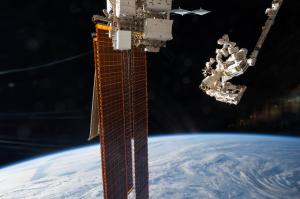
Meghan Everett: Okay. This is the best part. I get to talk about some of these in some more detail, which is great for great for a scientist to get to do. So the first thing I’m going to talk about is some of our external sensors, and we have one called EMIT, which is the Earth Surface Mineral Dust Source Investigation. And that has been on the space station since July of 2022. And this hardware was originally designed to look at dust just like in the name, but after it was on the space station and collected some images, we could see that it could actually detect greenhouse gases such as carbon dioxide and methane. And this really helps because as I said before, the International Space Station goes over 90% of the Earth’s surface. So we can detect these different greenhouse gas sources from areas where we don’t have good ground-based tools to detect them. And things are really un under-reported. So this has been and will be a huge advantage to helping understand those emission sources.
Another external device we have is called ECOSTRESS. And this measures the temperature of plants and the amount of heat radiating from the Earth’s surface. So ECOSTRESS can measure very small changes in the Earth’s surface temperature, or it can measure very large changes that might be caused by fires or volcanic eruptions and lava sources. And we have a variety of different instruments on the space station that measure different things in the atmosphere such as CO2, different temperature changes. And while each one of these provides really important data, the big advantage of these sensors is that when we put it all together and kind of aggregate the data, we can really inform things such as space weather, we can learn more about climate change. And all of this information can be used to inform policy and things that impact our lives here on Earth.

Host: So those were really good examples of scientific benefits and how that helps us here on Earth. So let’s move into some examples of societal benefits.
Meghan Everett: Okay. So as we move into this topic, I’m going to stay just for a second on some of our external devices that we have on the International Space Station. So another one that we have is called NICER, and this is the Neutron Start Interior Composition Explorer. And so for anyone that doesn’t know what a neutron star is, these are the glowing cinders that are left behind when massive stars explode into these things called supernovas. And the scientists in NICER, they wanted to be able to measure these kind of exotic energy states of matter. And in order to do that, they had to patent and develop a new X-ray source that could be turned off, on and off pretty quickly and measure these different matter sources. Well, it turns out that at Mass General Hospital, we needed to actually help improve some of the CT scanning capabilities. And so the same technology that our NICER scientists are using, the scientists at Mass General, are using this to develop better CT devices where the patients are exposed to less radiation and we actually get better image quality with these. So that is a very unique and cool example of how we can use an external instrument mounted on the space station to better improve lives of humans on Earth and inform their health.
Host: That is so cool. And I see here in our show notes is the device has been patented and additional work is now taking place to take it from experiential to an actual testable device. Do you think this type of technology, we could see it in, you know, widespread more hospitals across the U.S.?
Meghan Everett: Absolutely. And that’s exactly what we want to do is be able to not just treat and detect diseases, but also help the patient experience. And so if we are giving patients more radiation in order to identify their problem, we might sometimes be exacerbating this problem. So we really want to use this to be able to improve our abilities to detect diseases and diagnose patients on Earth.
Host: Okay. And we did an episode on robotic surgery in space. It was Episode 339, if you want to take a listen to that. It was with the surgeon and the payload developer. And what are some of the societal benefits on that side?
Meghan Everett: Yes, that was a super cool demonstration that we did on the space station. And so, if you didn’t see the podcast, we did not do robotic surgery in space. We used rubber bands to mimic this, and we had ground support controlling it. So the robotic device that we used in this remote surgery tech demonstration is really kind of an arm that was operated on the ground using commercial software and surgeons here on the ground. And then the astronauts in space tried to mimic these same types of robotic operations to perform these kind of pretend surgeries with the rubber bands and moving things around as a surgeon would on Earth.
But the very cool thing about that is that this type of technology can be applied to rural areas in on Earth where we don’t have great medical care treatment and it’s hard for these patients to get to a big medical center or a doctor. And we’ve actually seen nearly a third decline of surgeons in rural areas between 2001 and 2019. So that is very limiting to medical care that humans get here on Earth.
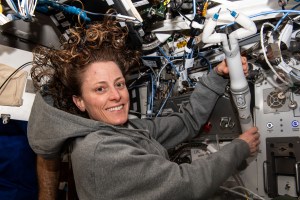
Host: Yeah. I know one of the big takeaways or objectives in this investigation was to see how long those comm delays were. And so say this is twofold, right? You know, there may not be a lot of surgeons in rural parts of the world, but also when our astronauts go to Moon and Mars needing a surgeon, you know, might not be readily available. And so seeing how we could do that from on the ground to wherever they are in say, Moon’s orbit or whatnot. And that was a really cool one to talk to the payload developer and actually one of the surgeons that performed on the ground. So moving ahead into some more societal benefits, big world of protein crystal growth, do you have any examples of that?
Meghan Everett: Yes, we do. And this leads actually into a much bigger topic, for societal benefits that I want to talk about that NASA participates in is Cancer Moonshot. And this is a program out of the White House and the whole goal is to cure, or decrease, the amount of cancer that we see in the United States through different actions in this Cancer Moonshot program. So we all know cancer is really, it has either probably affected every single person listening to this podcast, whether it’s directly or through someone that they know that has cancer. And it’s actually the second leading cause of death in the United States. So it’s really cool that NASA and particularly the ISS program gets to be an integral part in decreasing the severity and the occurrence of cancer.
And so to get to your protein crystal growth question, the way that NASA is approaching cancer Moonshot to treat and cure cancer comes from kind of three different prongs. And one of those is protein crystal growth. And here we can grow these protein crystals in space that are very uniform. And so these protein crystals are actually what are used in a lot of the cancer treatment, pharmaceuticals and drugs. And so one success story that came out of that is a drug called Keytruda. And the Keytruda is the molecule that actually, or the protein that actually is the treatable portion of cancer. And so in space we were able to make that better than we can in the Earth. And so by doing this, we can actually decrease the amount of time that it takes to treat the patients with Keytruda. So patients used to have to go in for a two-hour treatment and now they can go in and be treated with this drug in like 20 minutes. And the third phase, which is in a clinical trial right now, is to get a shot like you would go in for your flu shot and that would be your treatment. So that is a remarkable benefit that we’ve developed from space.
And as I said, there are three prongs. So the protein crystal growth is one, nanoparticle drug delivery is a second one. And so the idea of nanoparticles is that, we can use these particles to kind of more specifically treat and target the cancer itself. And so by titrating these particles to exactly the cancer only portion, then we don’t get widespread killing of the other tissues in the body. So there are lesser side effects and the patient ends up healthier from this. So we have several studies right now that are going on in the space station that are specifically looking at this nanoparticle drug delivery methods.
And the third prong that we are using is tissue engineering and stem cells. So we use cells to form these 3D structures that can mimic different body parts. And what we can find is that because there’s not gravity, these stem cells can grow in a 3D environment. Like we find them in the body better than they can do on the Earth. So if you think about in the Earth, the cells will kind of smash towards the bottom of the plate, but we don’t have that in gravity. And so we can really look at how these stem cells and organisms move in the body more closely than we can on Earth. And we have a series of investigations it’s called the Cancer in Low Earth Orbit Investigation Series that are really targeted at how we cure cancer. And each one of these investigations gets us a little bit closer to understanding how to treat and cure different types of cancers more readily.
Host: That is amazing about the IV administration and how much quicker now. Wow. Okay. So we have covered societal and scientific, let’s move on to some examples of exploration benefits.
Meghan Everett: Okay. So as I said before, we need to use the space station as a platform to do different technology demonstrations that will get us to stay in space for longer periods of time, in low Earth orbit and beyond low Earth orbit, and to explore those different platforms. So some of the really critical things that we need for humans to live in space, just like we need them for humans to live in Earth are air, water, and food. And so we have an ECLSS on the space station, Environmental Control and Life Support System. And we need to develop one for vehicles that are going to be going to the Moon and the space station we can think of as, it’s kind of like your palace of space, right? You get vehicles that are going up and down, it’s pretty big. We have resupply opportunities. And when we start talking about these exploration vehicles, the same systems that we use on the International Space Station are not going to work for these vehicles. So we have to develop these new systems to regenerate things such as air and water. And one of the things that we just recently accomplished on the International Space Station is we were able to regenerate 90% recovery of water. So that was a huge success story for our ECLSS systems.
Another area that we really focus on is food. And so in these new vehicles and when we start to explore new destinations, we’ll not have resupply vehicles. So the astronauts are going to have to be able to grow some of their own food and be a little bit more self-sustaining. And so one of the things we’re really working on right now is plant systems and how we can grow plants without water or with different hydration systems and with different types of soils. So we can see what are kind of the ideal growth conditions for exploration. The other very cool thing about this area is that it is directly applicable to some of the problems that we see here on Earth with plant life and plant growth and some of the costs associated with growing plants. So we’re really hoping that some of these technologies can be applied to how farmers grow crops on Earth and hopefully make it more economical and improve their growth crop cycles.
Host: Okay. And I think this might be a lot from your background in human physiology. Can you tell us about the human research side of the exploration benefits?
Meghan Everett: Sure. These are some of my favorite things to talk about. So first, before I get into the research, I’m going to let you know that when humans go into space, they adapt the space and there are some quick more acute adaptations and some longer-term adaptations. And some of the things that we can see are a decrease in bone health, a decrease in muscle mass, changes in the cardiovascular system. We see changes in the sensory motor system so you kind of have some space-based motion sickness types of things. And then we also see changes in vision over time. And so a lot of the research that we do for humans is to develop what we call countermeasures to figure out how we prevent some of these things from happening. And we have a big study right now that’s part of the human research program called CIPHER. And this puts together research from several different investigators at NASA, outside NASA, and academic institutions and even our international partners to kind of collaboratively look at how we prevent these microgravity induced changes in the human and how we understand those and what causes them a little bit more.

Host: I like how you said, just like on Earth, astronauts onboard the space station or Moon and Mars, they need food, air, water, just like us here. And so we already talked about the human side of things that those exploration benefits like the ECLSS system, food, human research, what happens when you’re on board space station as a human. Now let’s talk about some of the technology demonstrations, the tech things we need to stay in low Earth orbit or beyond for long duration periods.
Meghan Everett: Yes. So as I talked about all of these pieces of hardware that we need to keep the human alive, they also need power and data to get that information up and down from whatever space station it is or outpost on the lunar surface. And so one of the big things that we put on the International Space Station last couple years are the ROSA solar arrays. And these are very unique and exploration forward because they’re smaller, they’re actually less expensive, and they can autonomously be controlled so they can roll in and out and kind of direct where we’re getting our power from. So this is a really important advancement that we will need as we explore further from low Earth orbit.
Another thing that we’re going to need is communication and the ways that we communicate from the International Space Station to Earth are not going to be the best as we go beyond low Earth orbit. So we have to develop some better ways of communication that are faster and more powerful and can get bigger chunks of data up and down. And one of the ways that we have done this is through an instrument called ILLUMA-T. And this is the Integrated Laser Communication Relay Demonstration Low Earth Orbit User Modem Amplifier Terminal. So that’s why we’re saying ILLUMA-T, it’s very long. But the idea of this is that it can actually transfer data using lasers up and down from space to Earth faster.
Host: Okay. That was a lot of really good examples of why we do this type of research on space station and beyond for the exploration benefits. Now last but not least, let’s talk about economic benefits. Can you describe a few specific examples of that?
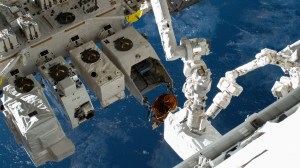
This technology could provide faster download of data from space to Earth in a variety of space regimes, including future missions to the Moon and Mars. Credit: NASA
Meghan Everett: Yes. And so one of the things I’ve talked about as we’ve gone through this podcast is how we want to grow the low Earth orbit economy and develop these benefits in the commercial industry for both space and for the ground. And as we’ve been able to do this, we’ve really developed the number of space focused companies and their research capabilities. So right now, we have 30 commercially owned and operated facilities on the space station where we’ve done a lot of these technology demonstrations and scientific investigations. And a couple that you may have already heard about but are really great examples of commercial success stories are from a company called Redwire, where they’ve done 3D bioprinting and we’ve returned the first human meniscus that was 3D bioprinted in space. And we have a bunch of examples of other functional tissues such as heart tissues that were 3D printed in space and returned to Earth. And so we’ve returned these samples to Earth and the scientists on Earth are looking at how these tissues that were 3D printed in space function on the ground and can function as an actual meniscus or function as actual heart cells on the ground. So we’re really excited about those results coming out in the future.
We also have, in kind of more the technology world, we have focused a lot on in-space manufacturing. And we have a company called Flawless Photonics that developed ZBLAN fibers in space using a system called Excalibur, which is very fitting and space sounding. And the Excalibur produced seven miles of ZBLAN fibers over four weeks on the International Space Station. So this was a huge achievement and it really, really demonstrated some of our ability to do this type of optical fiber manufacturing in space.
We also have another success story from LambdaVision and they have produced artificial retinas in space and they have shown that these retinas can be replaced for humans with diseases here on Earth. And so they’re going through some of their final stages of testing right now on Earth. But the idea is that that is going to be upscaled into full on manufacturing in space where we will produce these retinas and return them to Earth as a normal medicine practice and treatment for diseases here on Earth.
And the last thing I’ll talk about that is really has huge societal benefits also is the CHIPS Act. And so CHIPS Act is Creating Helpful Incentives to Produce Semiconductors and Science Act. And this is a White House Initiative Act where we’re trying to get American semiconductor research development and production to maintain U.S. leadership in this type of technology. And so NASA has been very forward reaching on this and really try to develop some in-space manufacturing techniques that would support some of the CHIPS Act work that’s coming out of the White House.

Host: These were all really cool examples and you know, when we talked at the beginning of this episode about different users of the International Space Station and how it’s designated a national laboratory, we work with the ISS National Laboratory a lot, and you did a really good job of explaining that they take a lot of the commercial science and research investigation side of that and procuring, manifesting and getting those ready to go on station. There are so many examples, and we could sit here for hours talking about so many of them. To wrap this up, we’re running out of time here. Can you explain a few everyday items that people use?
Meghan Everett: Yes. So I think that is a great way to wrap it up cause it kind of allows me to bring it back to one of the things I said in the beginning of this podcast is that we have an absence of buoyancy and sedimentation and an absence of convection and an absence of hydrostatic pressures that allow us to do a lot of material science work. And when I said that originally, you probably weren’t like, well how does that impact me? And so these examples here are really great ways in which we have been able to improve products without gravity to develop things such as shampoos and medicines. We have different things from Procter & Gamble, a company that you all are very familiar with. They have developed Febreze Unstoppable Touch Fabric Spray. And this was incorporated into materials based colloid research that was done on the International Space Station. So we have a lot of these companies that have developed patents because they’ve had the opportunity to participate in research in space.
Host: We talked about so many today and I love wrapping it up on something that we probably use every day. So much science taking place on station now and in the future, Meg, what are some scientific areas you are looking forward to seeing results from?
Meghan Everett: This is always my favorite question, but also the hardest question. So because my background is in human performance, I am always intrigued by research that benefits both human exploration but also humans here on Earth. So I don’t think I can pick one, but a lot of the research that we are doing to cure human disease on Earth, I think it is amazing that we can have an impact on curing cancer for people in Earth while also furthering human exploration beyond low Earth orbit. So because I get to work in this environment, which I get to do both things is remarkable and definitely didn’t think this was something that I was going to be doing in the future, but I’m really excited to see what is to come. I think, you know, we sit here now, and we talk about things that were not achievable two years ago, three years ago, and we’re making these miraculous discoveries and I can’t wait to see what’s going to come in the next five years on things that we just didn’t even dream of or we think were achievable today.
Host: I know, right? And all these things we talked about and then so many more coming in the future. Meg, I think we are almost out of time. Thank you so much for joining us today.
Meghan Everett: Absolutely. I will just wrap up by encouraging you to follow our science updates at nasa.gov/iss-science and follow us on social media at ISS_Research on X.
[Music]
Host: Thanks for sticking around. I hope you learned something new today. Our full collection of episodes is on nasa.gov/podcasts, and you can also find the many other wonderful podcasts we have across the agency there as well on social media. We’re on the NASA Johnson Space Center pages of Facebook, X, and Instagram. Use #AskNASA on your favorite platform to submit your idea or ask a question, just make sure to mention it’s for Houston We Have a Podcast.
Like Meg mentioned, you can keep up with station science at nasa.gov/iss-science, on X at ISS_Research and through Instagram on the International Space Station account as well. This episode was recorded on Sept. 26, 2024. Thanks to Gary Jordan. Will Flato, Dane Turner, Abby Graf, Dominique Crespo, Jenny Turner, David Brady, and Jennifer Buckley. And of course, thanks to Meg Everett for taking the time to come on the show. Give us a rating and feedback on whatever platform you’re listening to us on and tell us what you think of our podcast. We’ll be back next week.
This is an Official NASA Podcast.

